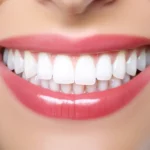This article examines the potential link between vaping and acne. Acne is a common skin condition that affects individuals of various ages. As the popularity of vaping has grown exponentially in recent years, concerns have arisen regarding its potential impact on skin health.
To explore this topic objectively, it is important to understand the underlying causes of acne as well as the components present in vape juice. Additionally, an examination of existing evidence linking vaping to acne will be conducted, along with an analysis of contrary views and studies.
Furthermore, other skin conditions associated with vaping will be explored. It is crucial to consider various factors that might influence the effects of vaping on the skin to gain a comprehensive understanding of this issue.
Finally, recommendations based on current knowledge will be provided to guide individuals concerned about their skin health when using e-cigarettes.
Introduction
Acne is a common skin condition characterized by the presence of pimples, blackheads, and whiteheads. It occurs when hair follicles become clogged with oil and dead skin cells, leading to inflammation.
Vaping, or the use of electronic cigarettes that heat a liquid containing nicotine and other chemicals, has gained popularity in recent years as an alternative to traditional smoking. However, its potential effects on skin health have not been extensively studied.
There is some evidence suggesting that vaping may contribute to the development or exacerbation of acne. Nicotine, one of the main components in e-cigarette liquids, has been shown to affect various aspects of skin health. It can increase oil production in the sebaceous glands and alter inflammatory responses in the body.
Furthermore, some studies have found that e-cigarette aerosols contain harmful substances such as formaldehyde and acrolein which can damage the skin barrier function and promote inflammation. These factors may potentially contribute to acne development.
However, it is important to note that research on this topic is still limited and inconclusive. Further studies are needed to establish a definitive link between vaping and acne. Additionally, individual factors such as genetics, hormonal changes, and skincare habits may also play a significant role in acne formation.
In conclusion, while there is some evidence suggesting a potential correlation between vaping and acne occurrence, more research is required for conclusive findings. Understanding the effects of vaping on skin health is crucial for both healthcare professionals and individuals considering using e-cigarettes as an alternative to traditional tobacco products.
Understanding Acne
One potential factor contributing to the development of skin blemishes is an understanding of acne and its underlying mechanisms. Acne is a common skin condition characterized by the presence of pimples, blackheads, and whiteheads. It occurs when hair follicles become clogged with oil and dead skin cells, leading to inflammation. While there are multiple factors that can contribute to the development of acne, such as hormonal changes and genetics, it is important to examine whether vaping could be another possible cause.
Research on the relationship between vaping and acne is limited but emerging. Some studies suggest that vaping may contribute to the formation of acne due to its impact on hormone levels. Nicotine present in e-cigarettes has been shown to affect hormone production, particularly increasing levels of testosterone. Elevated testosterone levels can lead to excessive sebum production, which in turn can clog pores and contribute to acne formation.
Additionally, certain chemicals found in e-cigarette liquids may have adverse effects on the skin. For example, propylene glycol, a common ingredient in vape juices, has been shown to have drying properties that could potentially disrupt the balance of moisture in the skin. This disruption may trigger increased oil production as a compensatory mechanism for dryness.
Although preliminary evidence suggests a potential link between vaping and acne development through hormonal changes and chemical exposure, more research is needed to confirm these associations definitively. It is essential for future studies to adopt rigorous methodologies involving large sample sizes and control groups for accurate conclusions.
In conclusion, while current evidence indicates that vaping might play a role in causing or exacerbating acne through hormonal changes and chemical exposure, further research is required before definitive conclusions can be drawn regarding this association. Understanding how different factors interact with each other will provide valuable insights into effective prevention strategies for combating this prevalent dermatological concern.
Components of Vape Juice
The composition of vape juice consists of various components that may have implications for skin health. Vape juice, also known as e-liquid or e-juice, is the fluid used in electronic cigarettes and vaporizers. It typically contains a combination of propylene glycol (PG), vegetable glycerin (VG), flavorings, and nicotine.
Propylene glycol is a common ingredient in vape juice that helps to create the vapor when heated. It is generally recognized as safe by the U.S. Food and Drug Administration (FDA) for ingestion but has not been extensively studied for its effects on the skin when inhaled. Some studies suggest that propylene glycol may have drying effects on the skin, which could potentially contribute to acne development.
Vegetable glycerin is another major component of vape juice and acts as a base for producing thicker clouds of vapor. Unlike propylene glycol, vegetable glycerin has moisturizing properties and is commonly used in skincare products due to its ability to attract and retain moisture. However, there is limited research on how inhaling vegetable glycerin affects the skin directly.
Flavorings are added to vape juice to enhance taste and aroma. While some flavorings are derived from natural sources, others may contain artificial ingredients or chemicals that could potentially irritate the skin and trigger acne breakouts. Additionally, certain flavorings have been found to contain diacetyl, a chemical compound associated with respiratory issues when inhaled.
Lastly, nicotine is an addictive substance found in many vape juices. Nicotine causes vasoconstriction, reducing blood flow to the skin and potentially affecting its overall health. Inadequate blood flow can impair wound healing processes and increase inflammation within the skin.
In conclusion, while vape juice contains various components that could potentially impact skin health, more research is needed to fully understand their specific effects on acne development. The current evidence suggests that propylene glycol, flavorings, and nicotine may have implications for skin health, but further studies are required to establish a clear link.
Evidence Linking Vaping to Acne
Research has provided evidence linking the act of vaping to an increased prevalence of acne, shedding light on the potential impact of electronic cigarettes on skin health. Several studies have explored the relationship between vaping and acne, revealing some compelling findings:
- Nicotine: Vape juice often contains nicotine, a highly addictive substance. Research suggests that nicotine can disrupt normal skin function by affecting oil production and inflammation. Excessive oil production can clog pores and lead to the formation of acne.
- Propylene Glycol: Another common component in vape juice is propylene glycol (PG). This chemical is responsible for creating the vapor in e-cigarettes. Studies have shown that exposure to PG can cause skin irritation and inflammation, which may contribute to the development or exacerbation of acne.
- Glycemic Index: Some researchers hypothesize that vaping may indirectly affect acne through its impact on blood sugar levels. E-cigarettes are often flavored with sweeteners, which can increase glycemic index (GI) levels when consumed orally. High GI foods have been linked to increased sebum production and acne severity.
While there is evidence suggesting a link between vaping and acne, it is important to note that more research is needed to establish causation definitively. There are several limitations in existing studies, such as small sample sizes and lack of long-term follow-up data. Additionally, individual factors such as genetics, diet, and hygiene practices may also contribute to an individual’s susceptibility to developing acne.
In conclusion, current research indicates a potential association between vaping and an increased prevalence of acne. The components found in vape juice, including nicotine and propylene glycol, may disrupt normal skin function and contribute to the development or worsening of acne symptoms. However, further investigation is required to fully understand this relationship and determine if other factors play a role in this correlation.
Contrary Views and Studies
Contrary to prevailing beliefs, alternative viewpoints have emerged regarding the potential relationship between vaping and the occurrence of acne. While some studies suggest a possible link between vaping and acne development, others argue that there is insufficient evidence to establish a causal relationship.
One study conducted by researchers at the University of California found that exposure to certain chemicals present in e-cigarettes can stimulate excessive production of sebum, an oily substance produced by the skin. This overproduction of sebum can clog pores and lead to acne breakouts. However, it is important to note that this study was conducted on cultured human cells in a laboratory setting, and further research is needed to determine if similar effects occur in real-world scenarios.
In contrast, another study published in the journal Dermatology Reports suggests that there may not be a direct association between vaping and acne. The authors argue that while e-cigarette components may potentially affect sebum production, other factors such as diet, hormones, and overall skincare habits play a more significant role in acne development. They emphasize the need for comprehensive investigations considering multiple variables before drawing any firm conclusions about the impact of vaping on acne.
It is worth noting that both studies have limitations. The first study only examined one aspect of vaping’s potential influence on acne using cell cultures instead of human subjects or animal models. The second study relied on self-reported data from participants, which can be subject to recall bias.
Overall, while some evidence suggests a potential link between vaping and acne through increased sebum production, more comprehensive studies are necessary to establish a definitive connection. Factors such as individual susceptibility, overall health habits, genetic predisposition, and environmental factors should also be considered before drawing any concrete conclusions regarding this topic.
Other Skin Conditions Linked to Vaping
Contrary to the belief that vaping does not cause acne, there have been studies indicating a possible link between vaping and other skin conditions. While the focus has primarily been on acne, it is important to explore potential connections with other dermatological issues as well.
One skin condition that has shown a correlation with vaping is contact dermatitis. This condition occurs when the skin comes into direct contact with an irritant or allergen, leading to redness, itching, and inflammation. Several case reports have documented individuals developing contact dermatitis after using e-cigarettes or vape pens. Although the exact mechanisms remain unclear, it is hypothesized that certain substances present in e-cigarette liquids may act as irritants or allergens.
Additionally, another skin condition associated with vaping is perioral dermatitis. This inflammatory disorder affects the area around the mouth and presents as small red bumps or pustules. A study published in JAMA Dermatology found that individuals who vaped were more likely to develop perioral dermatitis compared to non-vapers. The authors suggested that chemicals present in e-cigarette aerosols might disrupt the skin’s natural barrier function, leading to this particular type of dermatitis.
While further research is needed to establish a definitive causal relationship between vaping and these specific skin conditions, these preliminary findings suggest a potential association worth considering. It is crucial for healthcare professionals and individuals alike to be aware of these possibilities so they can make informed decisions regarding their choice of nicotine delivery systems. Future investigations should aim at elucidating the underlying mechanisms involved and conducting large-scale epidemiological studies for more conclusive evidence on this matter.
Factors That Might Influence Vaping’s Effects on Skin
Factors that may impact the effects of vaping on the skin include various environmental, genetic, and individual lifestyle factors. These factors can influence how vaping affects the skin and contribute to the development or worsening of skin conditions.
- Environmental Factors: The environment in which individuals vape can have an impact on their skin health. Exposure to secondhand smoke from vaping devices may lead to inflammation and irritation of the skin, potentially exacerbating existing conditions or causing new ones to arise. Additionally, exposure to pollutants and toxins present in the air where vaping takes place could further contribute to adverse effects on the skin.
- Genetic Factors: Individual genetic variations play a role in determining how one’s body responds to external stimuli like vaping. Certain genetic predispositions may increase susceptibility to developing skin problems after exposure to substances found in e-cigarettes. Understanding these genetic factors could help identify those at higher risk for adverse skin reactions.
- Lifestyle Factors: Personal habits and lifestyle choices can also influence how vaping affects the skin. For instance, individuals who have poor overall skincare routines or engage in unhealthy behaviors like excessive alcohol consumption or a high-sugar diet may be more prone to experiencing negative effects from vaping on their complexion.
It is important for researchers and healthcare professionals to consider these factors when studying the relationship between vaping and its effects on the skin. By understanding how different variables interact with each other, it will be possible to provide accurate information about potential risks associated with this popular form of nicotine delivery system usage.
Recommendations
Research suggests that implementing certain recommendations can help individuals maintain healthier skin while using vaping devices. These recommendations are based on evidence and aim to minimize the potential negative effects of vaping on the skin. By following these guidelines, vapers may be able to mitigate the risk of developing acne or other skin issues associated with vaping.
One recommendation is to maintain good hygiene practices by regularly washing the face with a gentle cleanser. This helps remove any excess oil, dirt, or bacteria that may accumulate on the skin due to vaping. Additionally, it is important to moisturize the skin adequately to prevent dryness and irritation that could contribute to acne formation.
Another crucial recommendation is to stay hydrated by drinking an adequate amount of water daily. Proper hydration not only benefits overall health but also plays a role in maintaining healthy skin. Drinking enough water helps keep the skin hydrated from within and aids in flushing out toxins from the body.
Furthermore, vapers should consider reducing their nicotine intake as it has been suggested as a possible factor contributing to acne development. Nicotine can affect hormone balance and increase sebum production, which can clog pores and lead to acne breakouts.
The table below summarizes these recommendations:
| Recommendations | Benefits |
|---|---|
| Maintain good hygiene | Removes excess oil, dirt, and bacteria |
| Moisturize adequately | Prevents dryness and irritation |
| Stay hydrated | Keeps the skin hydrated and aids toxin elimination |
| Reduce nicotine intake | Balances hormones and reduces sebum production |
In conclusion, adhering to certain recommendations can help individuals minimize potential adverse effects on their skin while using vaping devices. By practicing good hygiene, moisturizing adequately, staying hydrated, and reducing nicotine intake if necessary, vapers may be able to promote healthier-looking skin despite using electronic cigarettes.
Conclusion
To summarize, implementing the recommended practices discussed can serve as a proactive approach to maintaining healthier skin for individuals who use vaping devices. By following these suggestions, users may potentially reduce the risk of developing acne and other skin issues associated with vaping:
- Keep your skin clean: Regularly cleanse your face using a mild cleanser to remove any dirt and excess oil that may accumulate throughout the day. This can help prevent clogged pores and minimize the likelihood of acne breakouts.
- Stay hydrated: Drinking an adequate amount of water is essential for overall skin health. Proper hydration helps maintain the skin’s natural moisture balance and promotes a clear complexion.
- Moisturize regularly: Using a non-comedogenic moisturizer can help keep your skin hydrated without clogging pores. Look for products specifically designed for oily or acne-prone skin.
- Protect your skin from sun exposure: UV rays can damage the skin and exacerbate acne symptoms. Applying sunscreen with at least SPF 30 daily can protect against harmful effects and prevent potential flare-ups.
- Adopt a healthy lifestyle: A balanced diet rich in fruits, vegetables, lean proteins, and whole grains supports overall well-being, including healthy-looking skin. Additionally, getting enough sleep and managing stress levels are vital for maintaining optimal skin health.
While these recommendations promote healthier skincare habits among vapers, it is important to note that quitting or reducing vaping altogether remains the most effective way to address potential risks associated with its use. However, by integrating these practices into their routine, individuals who choose to continue vaping can take steps towards mitigating potential negative effects on their skin.
Frequently Asked Questions
Can vaping worsen existing acne conditions?
Vaping may worsen existing acne conditions. While the direct link between vaping and acne is not well-established, some studies suggest that vaping can contribute to skin inflammation and exacerbate existing acne.
Vaping involves inhaling chemicals and toxins that can affect hormone levels and disrupt the skin’s natural balance. Additionally, the heat and moisture produced by vaping devices can create an environment conducive to bacterial growth, further aggravating acne symptoms.
More research is needed to fully understand the relationship between vaping and acne.
Does vaping increase the production of sebum, leading to acne?
Vaping has been suggested to increase the production of sebum, which is an oily substance that can contribute to acne development. However, there is limited scientific evidence directly linking vaping to increased sebum production and subsequent acne formation.
Some studies have shown a correlation between smoking and acne, but it remains unclear whether this association extends to vaping.
Further research is needed to determine the potential role of vaping in increasing sebum production and causing acne.
Are there any specific ingredients in vape juice that can cause acne?
Certain ingredients in vape juice may contribute to the development of acne. Propylene glycol and vegetable glycerin, two common components of vape juice, are known to have a comedogenic effect, meaning they can clog pores and lead to acne formation.
Additionally, flavorings used in vape juice may contain chemicals that can irritate the skin and exacerbate acne.
However, further research is needed to fully understand the relationship between specific ingredients in vape juice and acne development.
Are there any differences in the occurrence of acne between different types of vaping devices?
There is limited research on the specific relationship between different types of vaping devices and acne occurrence.
However, it is worth noting that acne development can be influenced by various factors such as hormonal changes, genetic predisposition, and lifestyle choices.
While certain ingredients in vape juice may trigger acne in some individuals, no specific evidence suggests that the type of vaping device used plays a direct role in acne formation.
Further research is needed to explore this potential association.
Can vaping indirectly contribute to acne by affecting hormonal balance in the body?
Vaping may indirectly contribute to acne by affecting hormonal balance in the body. Research suggests that vaping can disrupt endocrine function and alter hormone levels, which could potentially lead to an increased risk of developing acne.
However, further studies are needed to establish a direct causal relationship between vaping and acne. Nevertheless, it is important for individuals who vape to be aware of the potential impact on their hormonal balance and consult with healthcare professionals if experiencing skin issues like acne.
Conclusion
In conclusion, the available evidence does not definitively establish a direct causal relationship between vaping and acne.
While some studies suggest a potential link between certain components of vape juice and skin inflammation, further research is needed to fully understand this association.
It is important to note that other factors such as genetics, lifestyle choices, and overall skincare routine may also contribute to the development of acne.
Therefore, individuals should exercise caution when drawing conclusions about the effects of vaping on their skin and consult with healthcare professionals for personalized advice.










